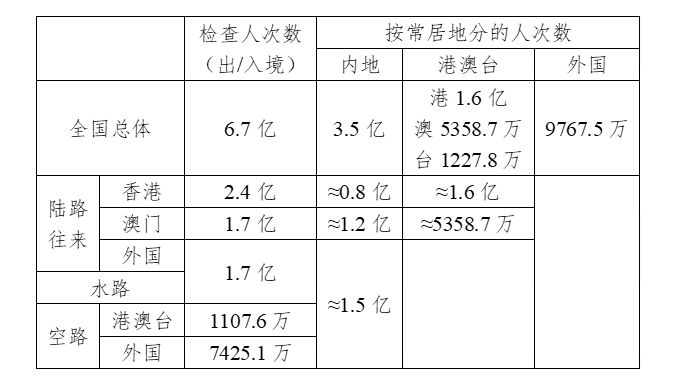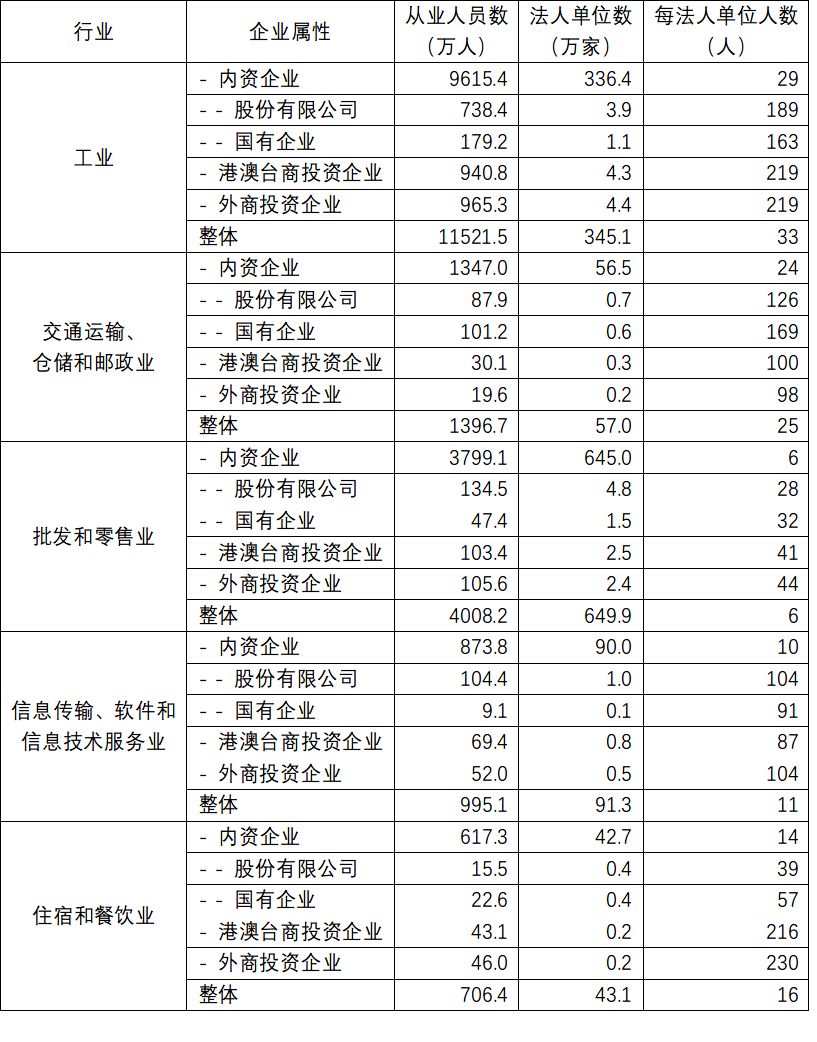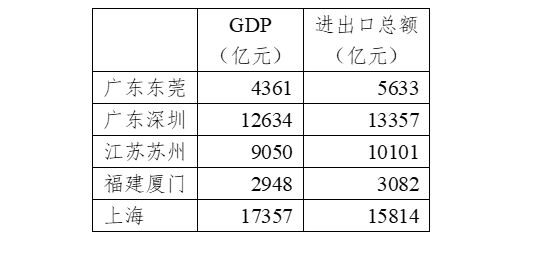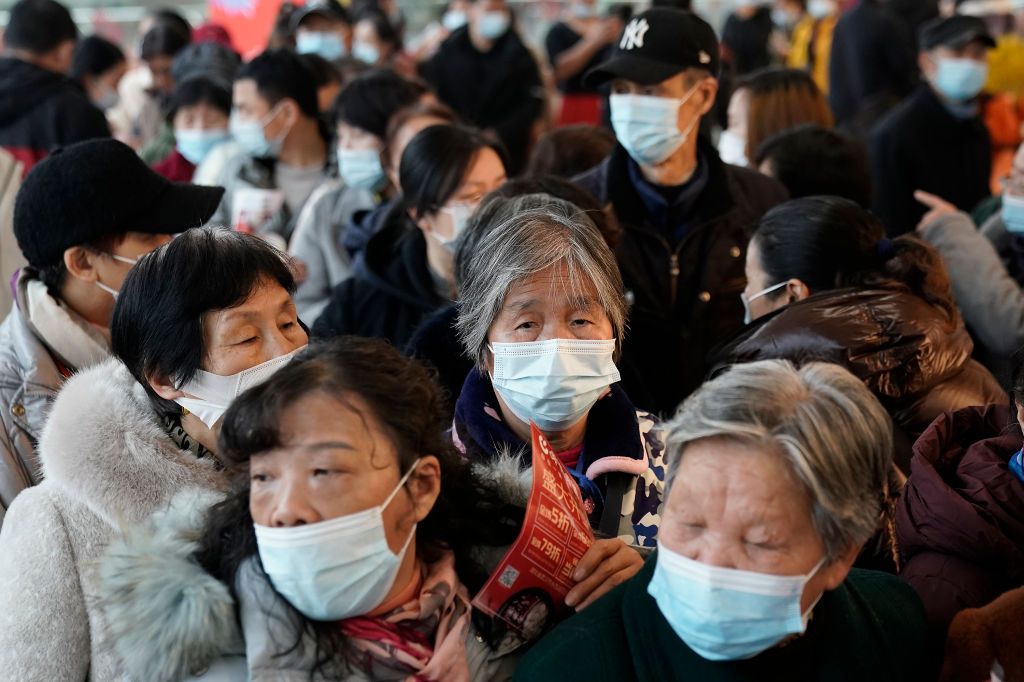Warm reminder from FT中文网: If you are interested in the content of FT中文网, please search for “FT中文网” in the Apple App Store or Huawei App Market, download the official application of FT中文网, and pay for subscription. I wish you a happy use!
For China, resuming personnel exchanges with overseas is a matter that requires a high degree of caution. On the one hand, the demand for personnel exchanges is relatively highly concentrated on a small number of people, so the risks and benefits of customs clearance are not equal; on the other hand, when China’s foreign-invested enterprises have matured, foreign-invested enterprises have Alternatives to personnel exchanges. If we consider the fragility of the manufacturing industry and its status in China, the Chinese government tends to approve their personnel exchange applications on a case-by-case basis instead of restoring customs clearance as a whole, and there are reasonable reasons.
In today’s article, we will continue to elaborate on the various factors that China needs to consider when resuming customs clearance.
China’s huge population makes inbound and outbound travel a relatively small activity for China as a whole.
The Ministry of Transport’s “Statistical Bulletin on the Development of the Transportation Industry in 2019” pointed out that Hong Kong, Macao and Taiwan routes completed passenger traffic of 11.076 million passengers; international routes completed passenger traffic of 74.251 million passengers. Taking into account that each trip comes and goes, we estimate that the number of people entering and leaving the country by air is 42.64 million. It is calculated that each Chinese enters and exits by air 0.03 times per year.
Even considering land and water routes, there is not much demand for going abroad. The data released by the National Immigration Administration on January 4, 2020 showed that in 2019, the border inspection agencies across the country inspected 670 million people entering and exiting; and according to the statistics of Shenzhen and Zhuhai Port Offices, there were 240 million passengers traveling to and from Guangdong and Hong Kong via Shenzhen. There are 170 million passengers traveling to and from Guangdong and Macao via Zhuhai.

So, how many mainland residents are there? From the above table, we can estimate that the demand for mainland residents going to Hong Kong is about 40 million round trips, the demand for going to Australia is about 60 million round trips, and the demand for traveling to and from Taiwan and abroad is 80 million round trips. In total, 1.4 billion mainland Chinese residents, on average, travel to Hong Kong 0.03 times, Macau 0.04 times, and overseas 0.05 times a year. In the case of customs clearance between Guangdong, Hong Kong and Guangdong, even if we reduce the base from 1.4 billion Chinese to 126 million Cantonese, each Cantonese only visits Hong Kong 0.3 times a year and Macau 0.5 times.
We have not deducted the necessary reasons for leaving the country-for example, there are about 200,000 mainland employees in Macau who travel between the mainland and Macau every day. Calculated on the basis of 250 working days throughout the year, they have contributed 50 million round trips. After deducting these 50 million trips from the demand for mainland residents to travel to Macau, the average mainland resident travels to Macau only 0.01 times per person. Therefore, for most mainland residents, customs clearance is more of an icing on the cake than a gift in the snow, and not leaving the country will not have a particularly large direct impact on their lives. For mainland residents who need to enter and leave the country for business reasons (such as business, etc.), the existing system is believed to be sufficient.
We might as well change our angle and focus on the people who need customs clearance most: business people of multinational companies.
The Communiqué of the Fourth National Economic Census issued in 2019 provides us with a perspective to observe the industrial structure of China’s manufacturing industry. The Census Bulletin indicated (at the end of 2018) that there were 3.451 million industrial enterprise legal entities nationwide, with 11.5215 million employees. This shows that, on average, each legal entity has only 33 employees. Among the industrial enterprise legal entities, small and medium-sized enterprises account for the vast majority.
The Communiqué further separates statistics based on the nature of the enterprise. It can be seen that the average number of employees per legal entity (219 people) in Hong Kong, Macao, Taiwan, and foreign-invested enterprises is much higher than the total number of domestic enterprises (29 people), and also higher than that of domestic enterprises’ state-owned enterprises (163 people) and joint stock limited companies ( 189 people). This situation is widespread in all walks of life:

It can be seen that the scale of foreign investment, Hong Kong, Macao and Taiwan investment enterprises is generally relatively large in the industry: except for the transportation industry (more state-owned enterprises and more foreign investment controls) and information transmission, software and information technology service industries ( Except for a large number of local software companies), foreign companies are the companies with the largest employment scale.
For foreign-invested and Hong Kong-Macao-Taiwan-invested companies, the larger scale of employment allows them to theoretically adopt localized management methods—that is, hiring local employees for management. Therefore, in the eyes of many intellectuals in Chinese society, the international flow of personnel for customs clearance is not actually necessary for foreign-funded enterprises. Right to speak within.
The biggest feature of localized management is that the main management affairs of foreign parties are gradually becoming macroscopic-from the concrete management of the production line to the abstract management of the strategy. The macro management of management allows most management affairs to be carried out online-the foreign management located abroad can communicate with the Chinese management located in China in the video, without having to go to the mainland for specific matters. This viable alternative plan has further reduced the number of necessary contacts, allowing China to further reduce the risk of imported epidemics.
Let’s take a closer look at some basic national conditions in China. The reason why China is so cautious about customs clearance is that China’s dense manufacturing factories are very sensitive to the epidemic. We mentioned in the previous two articles that the objective conditions of the cities in Guangdong Province have caused the Guangdong-Hong Kong customs clearance to have some impact on the epidemic prevention and control work in Guangdong Province-a business community mainly composed of manufacturing business owners and senior managers , Will bring imported epidemic risk to factories most prone to group and cluster epidemics and most vulnerable to the virus.
This kind of clustering risk is not groundless, but a lesson learned from Chinese and foreign countries. Manufacturing factories have the characteristics of “three-density” (intensive, close, and airtight): due to the control of the production environment (such as temperature, humidity, dust, etc.), the factory buildings will be more airtight; labor-intensive assembly manufacturing requires a large number of industrial workers. Workers will stay intensively in the same plant; workers will be in close contact in the living and working environment (for example, dining together, the same dormitory, adjacent workstations).
Therefore, cases of collective infections in manufacturing factories have emerged in endlessly all over the world like “hamsters”: starting from the outbreak of meat joint plants in various countries in the world in 2020 (the meat joint plants are more likely to survive outside the body due to low temperature operations) , The shipyard in Singapore (May 2020), the garment factory in Bangladesh (June 2020), the aircraft manufacturer in Germany (January 2021), and the automobile manufacturer in Japan (December 2021). There are cases of mass infection, and the number varies from dozens to more than a thousand people depending on the size of the factory. China cannot stand alone in its own right. In August this year, in a handicraft factory in Tongan District, Xiamen, Fujian Province, more than 30 cases were diagnosed in the entire factory due to the contact of infected workshop management personnel with workshop operations and management personnel in the workshop (September 14 32 cases were confirmed), and work was suspended for nearly one month.
For factory owners, an outbreak of collective mass infection in the factory will have two consequences: the direct consequence is that workers are diagnosed one after another and need to be hospitalized, which reduces the number of available workers in the factory; while the indirect consequence is that the epidemic will cause panic in the factory. , Bringing a wave of resignation and disrupting the production order of the factory. China’s neighbor Vietnam is an example: Ho Chi Minh City was infected by clusters of factories, and in October this year there was a scene where workers resigned and returned to their hometowns. This will result in reduced factory capacity, which will result in orders not being delivered and customers’ trust will be lost.
Losing customer orders or trust is fatal to factories: the resulting shutdown losses are a big blow to large companies, and it may mean a disaster for small and medium-sized enterprises. For example, after the Singaporean shipyard issued an order to “prohibit workers from leaving their homes” in May 2020 due to the epidemic, the factory’s production has stalled and more than 19,000 employees have to be laid off. This is not a good thing for both labor and management: laborers lose their stable jobs and jobs, and employers also face the dilemma of not being able to deliver orders and collect cash. In other words, if the factory cannot work normally, it will bring great economic pressure to the society and may even threaten social stability.
And China is a big manufacturing country commonly known as the world‘s factory. Some coastal industrial cities in China have a high degree of dependence on foreign trade (the total amount of imports and exports divided by GDP). In the first half of 2020, the dependence on foreign trade of many coastal cities exceeded 100% (the total import and export volume is greater than GDP):

At the same time, as stated in the communiqué just now, the majority of domestic enterprises employing only 29 people on average are still employed. Many of these factories are operated by small and medium-sized enterprises, which play the role of “screws” in the complex international supply chain. They have little resistance to the risk of work stoppage under the epidemic-if one of them detects a positive and stops work, it may be a disaster for the company and employees.
Therefore, for the government and society, preventing a cluster of epidemics in factories is almost the only way to keep the normal operation of these small and medium-sized enterprises-customs clearance may be beneficial to some people, but many small and medium-sized enterprises owners and workers do not want to see To this situation. For the government, a more appropriate approach may be to maintain the status quo-while continuing to provide case handling services for those who need to enter and exit the country, maintaining strict management of non-essential immigration behaviors.
(This article only represents the author’s own views, editor in charge: Yan [email protected])
